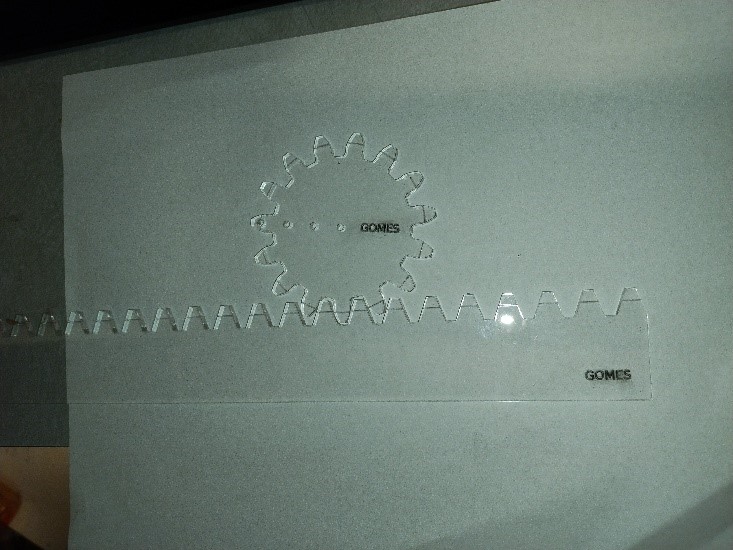Activity Examples from RIT Faculty
- RIT/
- Center for Teaching and Learning/
- Teaching/
- Active Learning/
- Activity Examples from RIT Faculty
These are examples of learning activities used by SHED faculty.
Each activity outline is followed by some teaching tips that the instructor has found helpful while using these activities and teaching large active learning classes.
Mario Gomes/mwgeme@rit.edu/KGCOE
MECE 205: Dynamics
This activity takes approximately 15-20 minutes in a 75-minute class.
Preparation
For this activity, Dr. Gomes prepared custom demonstrations and learning materials:
- A bicycle wheel mounted on an axle to demonstrate movement the non-intuitive motion that simple systems can have
- Custom plastic templates (similar to the toy Spirograph)
The class was taught in a SHED classroom with approximately 110 students sitting at tables of groups of up to six students. Dr. Gomes works from the small rolling table so he could present from the center of the room, using a separate doc cam to project wirelessly using Mersive. A separate laptop was plugged into the instructor station and projected onto the 2nd screen and controlled using a wireless presentation device.

Student activity
Set up
Dr. Gomes uses the geared wheel to demonstrate motion of a wheel that rolls without slipping to determine the velocity of various points on the moving object and introduces the formulas and instructions to calculate this velocity. He includes application of what they will be doing and how it builds on what they’ve done in a previous course (MECE 103: Statics)
Student work
Students are asked to calculate/predict the velocity of different points on a wheel as it moves. A series of questions are asked and based on intuition, students answer them accordingly. Then they are given the gear and rack and asked to trace out different paths and discover on their own if their initial prediction was correct. Each pair of students gets two sets of the plastic pieces and pencils and paper to help students visualize these paths traced by various points of a wheel rolling without slipping across level ground. Then after this is done, Dr. Gomes, uses the same gear and rack and traces out the paths and draws the corresponding velocity directions and then shows how the calculations can be done and shows that they are the same. This is repeated for other points of interest, starting with each student making a prediction and then exploring using the hardware to see what they can determine about their new prediction.
Debrief
After the activity, Dr. Gomes connects their observations in the activity to the calculation of velocity at each point.
Emily Coon/excsbi@rit.edu/College of Science
BIOL 102: General Biology II
This activity takes approximately 30 minutes in a 75-minute class.
Preparation
In this activity, students experience and record the ability to determine the flavor of gummi bears using one, two, or three senses. Since students need supplies, instructions, and a way to record results, before class she prepares plastic bins with three sets of supplies since this activity is conducted in pairs and there are six students at each table:
- Three bags of gummi bears
- Six worksheets (click to view or download)
- A tube of slips of PTC paper for a follow-on activity
Student activity
Set-up
At the beginning of each class, one student from each table retrieves the numbered bin corresponding to their table number. The class begins with a mini lecture introducing the objective and process of the experiment activity.
Student work
For the first round, students take turns trying to determine the flavor of different gummi bears without additional clues from sight or smell (closed eyes and plugged nose). They record their results on their worksheet and determine a hypothesis to explain their results. They can share these with others at their table. For the second round, students will add sight (open eyes, plugged nose). For the third round, students will use all senses to determine the flavor.
A follow up activity could be added with PTC paper to discuss how genetics can impact our senses, since some individuals do not have the gene to taste the PTC chemical.
Debrief
Ms. Coon facilitates a large group debrief.
Teaching tips
- For a class like this that uses different supplies for class, the numbered bins work well, and students are able to self-manage distributing and returning materials.
- Invest in a cart if you are going to have activities that require a lot of materials to be brought to the class.
Jennifer Bailey/jlbbme@rit.edu/KGCOE
BIME 181 Introduction to Biomedical Engineering
This activity takes approximately 15 minutes in a class.
Preparation
When discussing an open-ended, short answer problem or question where students can learn from each other’s answers. Students work in groups and then provide their ideas on a web-based whiteboard prepared with headings. The example used in class was sharing ideas on various aspects of working in a group.
Student activity
Set up
Early in the course, Dr. Bailey asks students to collaborate to develop the rules and expectations around how groups will work during the semester. The groups each start drafting their contracts and share ideas on a whiteboard for the whole class to see. Then other groups can discuss ideas that they had not considered and build on those ideas to form their own expectations.
Student work
Students work as a group at each table on a document that will be their final product. To keep things manageable, only one student at each table should access the whiteboard from their laptop to provide material for whole class discussion.
Debrief
While projecting, the instructor can comment on the ideas being shared and ask more open-ended questions for the groups to consider as they draft their own contracts. Ultimately this activity is to help the groups think deeper and broader about ideas which will be reflected in the work product that they are submitting. In this case, their group contracts are more thorough.
Teaching tips
- Many incoming freshmen seem used to this kind of collaborative work. Take advantage of that familiarity.
- Set the expectation that online activities like this can’t be practically done on a phone and students may need a laptop. Usually in groups of 4, someone will have a laptop.
- While Google Slides was used, some online activities can be easily converted to other modes; for example, this activity can be completed on a whiteboard using post-its and using a camera to capture the output.
- This is best for questions or points that do not have one correct answer. Points covered in our class were:
- Explain how team members will communicate effectively
- Explain what constructive criticism looks like for your team
- What is one positive change your team is planning to make (asked mid-semester)
Sandi Connelly/sjcsbi@rit.edu/College of Science
BIOL 102: General Biology II
This activity happens outside of class.
Download a detailed article on this activity with instructions shared with students in myCourses.
Preparation
For this type of independent work, it’s important to develop clear instructions and an associated rubric. In this assignment, there are six separate criteria, each contributing a certain percentage to the final grade.
Student activity
Set-up
Students receive detailed instructions and guidelines for creating a short video to explain a concept from the course they’ve already learned or to document an experiment to investigate a hypothesis.
Student work
Students work independently, though they will often enlist friends from in and out of class to appear in videos or otherwise help out.
Debrief
The detailed rubric with specific criteria helps students understand where they did well and where they could have done better.
Teaching tips
- With an activity like this, clear, detailed instructions and expectations are critical.
- Provide concrete examples of the types of concepts or experimental questions you’d like them to engage with.
- To help students hit the right level, I ask them to create the video with a middle-school student viewer in mind.
- Emphasize to students that the critical aspect of this activity is to clearly demonstrate understanding or to document their experiment. While creative use of video techniques may be appreciated, the critical element is to provide a clear and correct presentation.
- Sharing some of the videos in class can help build community while emphasizing examples of well-done scientific processes.






